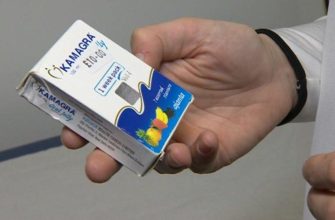Yes, you often can safely cut pills in half, but only if they have a score line. A score line is that little groove running down the middle, specifically designed for splitting. Pills without a score line should generally be taken whole.
Why this distinction? Scored tablets are manufactured to ensure equal drug distribution in each half, providing the correct dosage. Unscored pills might have uneven distribution, meaning one half could contain more medication than the other, potentially leading to under- or over-dosing.
Beyond score lines, consider the medication itself. Some drugs are formulated for extended release, meaning they dissolve slowly over time. Cutting these can destroy the extended-release mechanism, causing the entire dose to be released at once, potentially causing adverse effects. Check with your pharmacist about all your prescriptions to see if they can be cut.
Finally, think about hygiene. Always use a clean pill splitter, which you can purchase at most pharmacies. This ensures a clean, accurate cut and minimizes contamination. Avoid using knives or scissors, as these can shatter the pill and are less sanitary.
- Cutting Pills in Half: Is it Safe?
- Why Some Pills Shouldn’t Be Cut
- Pills That Are Safe to Cut
- Why Cut Pills?
- Safety First: Not all pills are created equal!
- Pill Splitting Suitability
- Pills You Can Usually Split
- Pills You Should NOT Split
- Pill Cutter Essentials
- Scoring and Its Importance
- Risks of Incorrect Splitting
- Uneven Distribution of Active Ingredients
- Compromised Pill Integrity
- Increased Exposure to Medication
- Dosage Accuracy Concerns
- Specific Pills to Avoid Cutting
- Doctor’s Guidance is Key
- Why Ask Your Doctor?
- Alternatives to Cutting Pills
Cutting Pills in Half: Is it Safe?
Before you cut any pill, confirm with your doctor or pharmacist that it’s safe to do so. Some medications, especially those with a special coating or designed for slow release, become ineffective or even dangerous when split.
If your medication *is* safe to cut, use a pill splitter rather than a knife. A pill splitter gives a cleaner, more accurate cut, reducing the risk of uneven doses. Uneven doses can affect the medication’s benefits.
Why Some Pills Shouldn’t Be Cut
Extended-release (ER), sustained-release (SR), or enteric-coated medications often shouldn’t be split. Extended-release pills deliver the medication gradually, and cutting them disrupts this mechanism, potentially releasing too much medicine at once. Enteric-coated pills have a special coating that protects the drug from stomach acid. If you split the pill, the coating is broken, and the medicine may become ineffective or irritate your stomach.
Pills That Are Safe to Cut
Your pharmacist can tell you if a pill is safe to cut. Typically, scored tablets (those with a line down the middle) are designed to be split, but verify this each time, since even scored pills aren’t *always* safe to cut. Also consider the stability of the medication after splitting. Some medications degrade quickly when exposed to air and light, so you must take the second half right away.
Always store the remaining portion of a split pill properly, usually in its original container away from light and moisture. Consider splitting the pill right before you take it to maintain its potency. When unsure, choose not to split it, prioritize safety, and consult with your doctor or pharmacist.
Why Cut Pills?
You cut pills primarily to save money. Often, a higher dose pill costs the same as a lower dose. Splitting it gives you two doses for the price of one. Check your prescription drug prices using sites like GoodRx to compare costs of different dosages.
Sometimes, a doctor might prescribe a dose not commercially available. If your required dose is 75mg and only 50mg and 100mg tablets exist, splitting the 100mg tablet is your solution.
Safety First: Not all pills are created equal!
Before you reach for a pill splitter, understand when *not* to cut.
- Extended-release or sustained-release medications: These release medicine slowly. Splitting them can lead to a dangerously high dose all at once. Look for terms like “ER,” “SR,” “XL,” or “CR” on the packaging.
- Capsules: Capsules typically contain powder or liquid. Splitting them is messy and inaccurate.
- Enteric-coated tablets: These have a special coating to protect the medicine from stomach acid. Splitting them destroys this protection, potentially causing stomach irritation or rendering the medication ineffective.
- Pills that are cytotoxic (chemotherapy drugs): Splitting these increases the risk of exposure to hazardous medication. Always have a professional handle these.
If your pills are safe to split, use a pill splitter rather than a knife or scissors. Pill splitters provide a cleaner, more accurate cut. Ask your pharmacist if you are unsure if your pills are safe to be split or for recommendations on pill splitters.
Pill Splitting Suitability
You can safely split some pills, but not all. Check for a score line. This line indicates it’s designed for division.
Pills You Can Usually Split
- Pills with a clear score line. The score guides accurate division.
- Pills that are not enteric-coated. Enteric coatings protect the stomach.
- Pills that are not time-release, extended-release, or sustained-release. These require precise dosages.
- Pills that are the correct dosage size for your needs after splitting. Ensure the split dose is therapeutically appropriate.
Pills You Should NOT Split
- Capsules. Splitting these results in inaccurate doses and spillage.
- Enteric-coated tablets. Breaking the coating alters drug absorption.
- Time-release, extended-release, or sustained-release tablets. You disrupt the medication’s controlled delivery.
- Chemotherapy drugs. Exposure is harmful.
- Warfarin, due to its narrow therapeutic index. Accurate dosing is key.
- Any unscored pill where precision is paramount. When in doubt, ask a pharmacist.
Consult your pharmacist. They can confirm if splitting a specific medication is acceptable, based on its properties and your prescribed dose. They also help if the dose doesn’t split evenly. They have valuable knowledge for avoiding dangerous situations.
Pill Cutter Essentials
Opt for pill cutters with stainless steel blades; they stay sharper and resist rust better than other materials. Consider a cutter with a V-shaped holder to keep pills centered for a more accurate split.
Look for models featuring a grip or non-slip base. This prevents slippage during cutting, increasing safety and precision. Some cutters include storage compartments, providing a place to keep your pills organized.
Evaluate cutters based on the size and shape of pills you typically take. Larger pills require a cutter with a wider cutting area. For oddly shaped pills, a cutter with adjustable guides can prove invaluable.
Choose cutters that are easy to clean. Models that disassemble simplify the cleaning process, reducing the risk of medication buildup and contamination. A quick rinse with warm, soapy water after use keeps the cutter hygienic. Never use abrasive cleaners as they can damage the blade and plastic parts.
If you have dexterity issues, look for pill cutters with a lever action or ergonomic design. These require less force to operate and are easier on the hands. Some models come with magnifying lenses to help with pill placement.
Inspect your cut pills after each use. Ensure the dosage is as accurate as possible by visually comparing the two halves. If the cut is uneven, replace the pill cutter or consult your pharmacist regarding alternative solutions. Using a damaged cutter can lead to inaccurate dosing, which may have adverse health outcomes.
Scoring and Its Importance
Check if your pill has a score line before cutting. The score line is that little groove intended to help you accurately break the pill in half, or sometimes into quarters. Pills with scores usually allow for a more even dose in each piece.
Manufacturers put score lines on pills specifically tested and approved for splitting. They ensure the medication distributes evenly throughout the pill, so each half contains roughly the same amount of active ingredient. Without a score line, cutting could result in uneven dosing, where one piece has significantly more or less medication than the other.
If a pill lacks a score, consult your pharmacist or doctor before attempting to cut it. They can advise you if the medication’s formulation makes splitting unsafe or if an alternative dosage form exists. For instance, some extended-release medications should never be cut, as doing so disrupts their timed-release mechanism, potentially delivering a dangerously high dose at once.
Use a pill splitter for the best results. These devices provide a clean, accurate cut compared to using a knife or scissors, minimizing the risk of crumbling and ensuring more precise dosing. Look for pill splitters with a blade guard for added safety.
Always store split pills properly. Light, air, and moisture degrade some medications. Cut only the amount you’ll use immediately and store the remaining half in a cool, dry place, preferably in its original container. This helps to maintain its stability and potency until you take it.
Risks of Incorrect Splitting
Incorrect splitting of pills can lead to inaccurate dosages. If you don’t get a consistent half each time, you risk taking too much or too little medication, impacting its therapeutic benefit or potentially causing adverse effects. Always use a pill splitter for best results; it provides a more precise cut than using a knife or scissors.
Uneven Distribution of Active Ingredients
Some medications aren’t uniformly mixed. The active ingredient might concentrate in one area of the pill. Splitting unevenly then results in one half containing a larger dose than the other. Extended-release medications are especially problematic; cutting them destroys the controlled-release mechanism, potentially delivering a dangerously high dose all at once. Consult your pharmacist before splitting any extended-release medication.
Compromised Pill Integrity
Crushing or crumbling occurs frequently when splitting pills, particularly if they are small or oddly shaped. This compromises the integrity and stability of the medication. Fragments can also be difficult to swallow or accurately measure. Store split pills properly and use them immediately to minimize degradation.
Increased Exposure to Medication
Splitting pills generates dust, increasing your exposure to the medication. This is particularly dangerous if you are splitting cytotoxic medications, hormone therapies or other medications with significant side effects from even minor exposure. Use caution, split pills in a well-ventilated area, and avoid inhaling the dust.
Dosage Accuracy Concerns
Aim for precision. Splitting pills, though sometimes necessary, can lead to inaccurate doses. You might receive more or less than intended, impacting the medication’s effect.
Understand that not all tablets are suitable. Pills with a special coating (like enteric-coated or sustained-release) should never be cut. These coatings protect the stomach or control how the medication releases, and splitting them defeats this purpose, potentially causing stomach upset or an overdose.
Use a pill splitter for improved accuracy. A study published in the Journal of the American Pharmacists Association found that using a pill splitter significantly reduces dosage variability compared to using a knife or scissors. Pill splitters create a cleaner, more even cut.
Consider seeking alternatives if accuracy is paramount. If you require a precise dose or have difficulty splitting pills evenly, ask your doctor if the medication is available in a lower strength or liquid form. Compounding pharmacies can also prepare custom doses.
Review the following table to understand potential dosage variance when splitting pills:
| Method | Average Dosage Variance | Study |
|---|---|---|
| Pill Splitter | 5-15% | Journal of Pharmacy Technology |
| Kitchen Knife | 15-25% | International Journal of Pharmaceutics |
| Scissors | 20-30% | Independent Lab Testing |
Regularly check your splitting technique. After splitting, visually inspect the halves to ensure they are as even as possible. Discard any significantly uneven pieces to maintain consistent dosing. Even with a splitter, practice increases accuracy.
Consult with a pharmacist about specific medications. Some drugs are more susceptible to inaccurate splitting due to their physical properties or dosage requirements. A pharmacist can provide tailored advice based on your medication and circumstances.
Specific Pills to Avoid Cutting
Don’t split enteric-coated tablets. This coating protects the drug from stomach acid, ensuring it dissolves in the small intestine. Cutting it destroys this protection and can irritate your stomach, potentially reducing the drug’s absorption.
Also avoid cutting extended-release (ER), sustained-release (SR), or controlled-release (CR) medications. These pills release medication slowly over time. Splitting them can release a large dose all at once, leading to a dangerous overdose or inconsistent blood levels. You can identify them easily by looking for ER, SR, or CR labels in the medication name.
Steer clear of cutting capsules, including both hard-shell and softgel types. Capsules contain medication in powder, liquid, or gel form. Cutting them can make a mess and result in inaccurate dosing. Certain capsules might contain medications that are harmful if touched. Instead, discuss alternative options with your doctor.
Chemotherapy drugs should never be split. Exposure to the drug can pose a risk. Handling them improperly is hazardous.
We caution against splitting warfarin (Coumadin) tablets unless specifically instructed by a doctor or pharmacist. It’s a blood thinner. The dosage needs careful calculation. Inconsistent doses can lead to dangerous complications.
If your pills are very small or oddly shaped, splitting them accurately becomes difficult. This could make a prescribed dose very inaccurate. Request a different dosage from your healthcare provider.
Always consult your pharmacist or doctor before splitting any medication to determine if it is safe and appropriate. They can provide personalized advice based on the specific drug and your individual needs.
Doctor’s Guidance is Key
Consult your doctor or pharmacist before you split any medication. Your doctor knows your medical history, current medications, and the specific reason for your prescription. They can advise you on whether splitting your specific pill is safe and appropriate.
Why Ask Your Doctor?
Medications aren’t always evenly distributed within a pill. Splitting a non-scored pill, or one where the medication isn’t evenly spread, can result in you getting an incorrect dose. Your doctor can confirm if the pill is scored properly for splitting and if the medication is distributed uniformly.
Discuss alternative formulations with your physician if you find splitting difficult or inaccurate. They might suggest a lower-dose pill, a liquid formulation, or a different medication altogether. Always prioritize accurate dosage to ensure treatment is effective and to minimize the risk of side effects.
Your doctor can also consider how pill splitting interacts with other medications you are taking. Some combinations can be dangerous, so always have them assess all drugs you ingest. If approved, ask your doctor to demonstrate the proper splitting technique, like using a pill splitter, which can ensure accuracy and reduce the risk of crumbling.
Alternatives to Cutting Pills
Ask your doctor if a liquid form of your medication is available. Liquid medications often make precise dosing much easier. Many pharmacies can compound custom liquid formulations if a commercially available option doesn’t exist.
See if your medication comes in different strengths. Requesting a lower dose tablet may eliminate the need for cutting. Discuss this option with your doctor to ensure the lower dose meets your medical needs.
Consider using a compounding pharmacy. Compounding pharmacists can create medications in specific dosages not commercially available. They can also combine multiple medications into a single capsule, simplifying your regimen. Always discuss this with your prescribing physician first!
Explore alternative delivery methods such as transdermal patches, injections, or inhaled medications, depending on the medication type. These methods bypass the need for oral pills and can provide sustained release.
Investigate dose-splitting services offered by some pharmacies or mail-order providers. They can pre-cut your pills and individually package them for you, ensuring accurate dosing and preventing contamination. Check if your insurance covers this service.
Before switching to a different dosage or formulation, be aware of potential cost implications. Some forms may be more expensive than others. Check with your insurance provider and pharmacy for pricing details.
Talk to your doctor about all available options. They can assess your individual needs, consider potential drug interactions, and help you choose the safest and most appropriate alternative.






